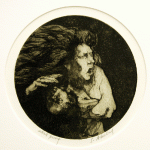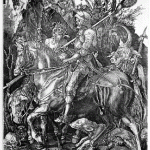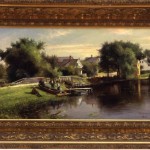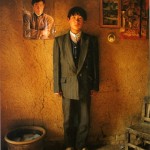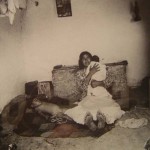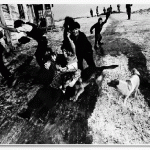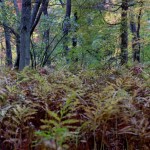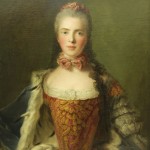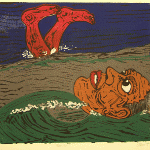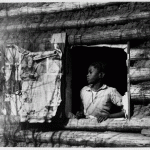Pictures, Words
Thousand Words Project (Brushstrokes and Words), Lewiston Middle School, Integrating Literacy and Visual Art, Susan B. Weber
Reading Pictures, Reading Words–Comprehension Strategies
It is possible to understand and appreciate art with the same comprehension strategies used for reading written text. Some of these strategies are questioning, connecting, inferring, and predicting. As we interpret art, we prepare to “apply effective strategies to the reading and interpretation of fiction” as The Maine Learning Results require.
This lesson uses an assortment of art pieces to differentiate instruction in order to support the teaching of these comprehension techniques. This appeal to the visual learner will offer an alternate entry point to this content for many students, sparking discussion and making the strategies more concrete.
Objectives:
- To understand and appreciate art with the comprehension strategies used for reading written text
- To introduce or review and practice reading comprehension strategies
- To expose students to a wide variety of two-dimensional art
Maine Learning Results:
A: 1-6,8,10; B: 1,2,8,9; D: 3
Materials:
Laptops
LCD projector
Classroom materials
Procedure:
Teacher will select and post the reading strategy of inferring.* Students will engage in the following bell activity, designed to model the inferencing strategy:
With Arthur Rothstein’s “Girl at Gee’s Bend” projected on a screen, students will answer in writing the following three questions:
What is she thinking?
What is she looking at?
How do you know?
Students will share answers to questions #1 and #2 and discuss. Teacher will ask question #3 to elicit answers involving reading strategies.
Teacher will give definition and explanation of inferring. Students will access website and view four preselected pieces of art.
Each student will select one of the four photographs with which to work. Teacher will assign students to one of four groups, according to picture selection. Students will collaborate within groups to form inferences based on their common picture. Groups will present and justify their inferences to the class as the art is projected on a screen. Teacher will use probing questions to help students clarify, adjust, and/or support responses in order to demonstrate comprehension of the strategy.
Assessment:
Informal–teacher may make anecdotal notes regarding level of engagement & quality of responses. Follow-up assignments for scoring may include above task performed independently and journal entries demonstrating proficiency in meeting objectives.
*Any strategic reading skill may be used to “read” the art; for the purpose of this example, a task to teach inferring has been selected.
- Abeles, Sigmund
- Ando, Hiroshige
- Anonymous (after Durer)
- Coombs, DD
- Jiang Jian
- Koudelka, Josef
- Koudelka, Josef
